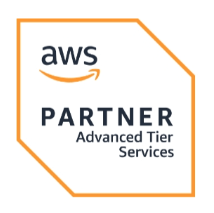Managing a large number of AWS accounts can be a daunting task for any business. In the absence of centralized account management, administrators often manually configure new accounts which may lead to errors. In addition, they need to ensure that each account follows strict standards for security, compliance, and governance. Monitoring the performance, costs, and usage of each account is also imperative.
So how can you simplify this process and gain more control over multiple AWS accounts? Enter AWS Control Tower, a service from Amazon Web Services that helps you set up and govern a secure, multi-account cloud environment. It automates the creation of a landing zone, a pre-configured environment that follows best practices for security and compliance.
But before you start using AWS Control Tower, there are some key factors that you need to consider. In this blog post, we will discuss five of them for a successful deployment.
How AWS Control Tower Simplifies Cloud Governance?
As cloud operations become more complex and diverse, businesses need a centralized way to manage and govern a multi-account structure. A well-planned implementation of AWS Control Tower serves as the cornerstone for maximizing benefits such as:
- Centralized Management: Provides a single pane of glass for managing all of your AWS accounts. This makes it easier to enforce policies, track compliance, and optimize costs.
- Pre-Configured Controls: You can utilize a set of pre-configured controls that can help meet security, compliance, and operational requirements.
- Automated Provisioning: Automate the provisioning of new AWS accounts which results in saving time and resources.
- Integrated Services: Control Tower can seamlessly integrate with AWS Organizations and AWS IAM to extend governance and compliance controls across your entire AWS environment.
But a successful implementation requires more than just deploying the tool – it demands a strategic approach. That’s where Cloudelligent steps in. We’re here to assist you design and establish secure AWS landing zones. Our validated AWS Control Tower Service Delivery showcases our deep expertise in helping you get started quickly and easily.
5 Vital Considerations for AWS Control Tower Deployment
When aiming for a successful Control Tower deployment, keep these crucial factors in mind to significantly enhance your AWS multi-account strategy.
1. Assessing Your Current Environment
One of the key factors to consider for AWS Control Tower implementation is assessing your current environment. This involves taking stock of your AWS accounts, resources, policies, and governance mechanisms currently in place. You also need to identify the gaps and challenges faced while managing your cloud environment such as compliance, security, cost optimization, and scalability.
By examining your current environment, you lay the groundwork for a tailored Control Tower setup that aligns with your unique business needs. Here are some specific questions you can ask:
- What is your current AWS account structure and associated permissions?
- What are your security and compliance requirements?
- What governance processes are currently in place?
- What gaps do you see in security, compliance, and governance?
Answering these questions will help you gain a better understanding of your needs and how AWS Control Tower can achieve them. But don’t worry, you don’t have to do it alone. Cloudelligent experts can assess your current environment, provide an extensive report that highlights any gaps, and recommend solutions.
2. Developing Account Structure Design
Another key factor to consider is developing a well-architected account structure. This means designing a logical and scalable hierarchy of AWS accounts that aligns with your business requirements. A robust account structure can help you organize your resources, manage your access control, and optimize your costs.
Control Tower can streamline your AWS account management through a landing zone. This consists of a root which contains all Organizational Units (OUs) and accounts, and two shared accounts for security and logging purposes. You can create a hierarchical OU structure by function, department, project, or environment. Each OU can have its own set of controls and policies that are applied to the accounts within it. You can also use AWS Account Factory to provision new accounts or enroll existing ones into your landing zone.
After designing the hierarchy, you can start to develop your account structure. There are a few common patterns that you can follow such as:
- Shared Services: You can add resources that are shared across the organization such as IAM users and groups, Amazon S3 buckets, and Amazon CloudFront distributions.
- Production: Contains resources that are used for production workloads.
- Development and Testing: Hosts resources that are used for development and testing purposes.
- Sandbox: This account functions as your experimentation and learning hub.
3. Blueprint Customization and Guardrail Configurations
One of the benefits of AWS Control Tower is that it provides pre-configured blueprints and guardrails that help you set up a secure and compliant multi-account environment. These templates are designed to follow industry best practices. However, it is important to customize the templates to suit your organization’s unique requirements. This may include adding or removing resources, changing the permissions of users and roles, or configuring AWS guardrails to meet compliance standards.
Here are some insights into modifying guardrails and blueprints to align with compliance standards and security practices:
- AWS Service Control Policy (SCPs) can be modified to restrict access to specific resources or services. You can use SCPs to prevent users from creating new Amazon S3 buckets or from making changes to existing EC2 instances.
- AWS Config rules can be changed to monitor specific configurations or events. Leverage AWS Config to monitor changes to your security groups or to track the creation of new IAM users.
- AWS CloudFormation hooks can be configured to automate the enforcement of your governance and compliance policies. For example, you can create a hook to automatically disable an account if it violates a specific policy.
Stuck on where to start? Leverage Cloudelligent’s customized policies and guardrails for Control Tower on GitHub to set up a secure, multi-account AWS environment.
4. Managing Users and Access via AWS IAM Identity Center
In the process of deploying AWS Control Tower, one of the fundamental aspects is to effectively manage user access and permissions across your AWS environment. You can use AWS IAM Identity Center (IDCC) which is a centralized console that makes it easy to create, manage, and monitor users and groups across multiple AWS accounts. It provides:
- Single Sign-On: IDCC provides single sign-on to AWS applications, so users can access the resources they need with a single set of credentials. This reduces the risk of unauthorized access.
- Role-Based Access Control (RBAC): IDCC supports RBAC, which allows you to define fine-grained permissions for users and groups. This helps you to secure your AWS environment and prevent unauthorized access.
- Auditing: IDCC provides auditing capabilities, so you can track user activity and identify any suspicious behavior.
5. Account Migration and Integration Strategies
The best strategy for account migration will depend on the size and complexity of your environment. If you have a small number of accounts, you may be able to migrate them all at once. However, if you have a large number of accounts or a complex environment, you may want to consider an incremental migration.
Confused about which cloud migration strategy to opt for, here is a handy guide to help you out: Lift-and-Shift vs. Refactor: A Guide to Choosing the Best Cloud Migration Strategy.
In addition, you will also need to integrate your existing resources with Control Tower. This includes things like IAM policies, security groups, and Amazon S3 buckets. Listed below are services that you can use to migrate, integrate, and monitor your accounts:
- AWS Control Tower Customizations: This tool helps you automate the migration and integration of your accounts.
- AWS CloudFormation: This service can be used to create and deploy templates that define your AWS resources.
- AWS Service Catalog: Provides a catalog of pre-approved IT services that you can use to provision your AWS resources.
- Amazon CloudWatch: You can monitor all of your resources in one place and easily track the health and performance of your environment.
To manage the transition smoothly and minimize disruption, you can follow these tips:
- Start Small: If you have a large environment, start by migrating a few accounts at a time.
- Use a Staging Environment: Test your changes in a staging environment before you deploy them to production.
- Have a Rollback Plan. In case something goes wrong, have a plan to roll back your changes.
- Communicate: Keep your users informed of the migration process to minimize disruption.
Next Steps in Centralizing Cloud Governance on AWS
Taking control of your cloud environment doesn’t have to be overwhelming. With the right strategy and tools, you can simplify governance, enhance security, and streamline operations. By assessing your current environment, designing a scalable account structure, customizing blueprints and guardrails, managing user access through AWS IAM Identity Center, and implementing thoughtful migration strategies, you can unlock the full potential of a secure and compliant multi-account cloud environment.
Cloudelligent is your trusted partner for deploying and optimizing AWS Control Tower to meet your business needs. With expert guidance, tailored solutions, and ongoing support, we help you navigate the complexities of cloud governance and establish a seamless multi-account strategy.
Book a Meeting with our team today and take the first step toward a centralized, secure, and scalable AWS environment.










